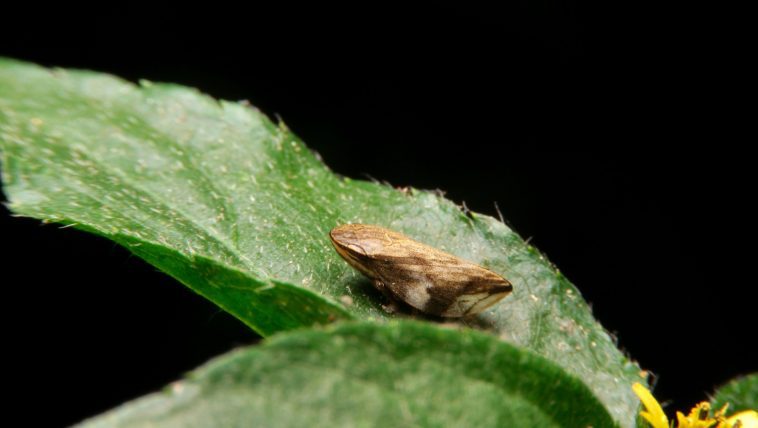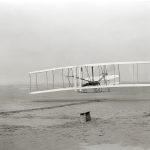Collected from the news page: Thank God for Insects
Editor’s note: Whether we are studying how insects do what they do just to be amazed or to use the same tricks ourselves, these tiny creatures are endless sources of fascination. Unlike so many in the world, we recognize they were carefully designed in the smallest detail by their Creator, God.
Froghoppers Get a Grip
[Not only do these bugs have spines, they have metallicized pokers! Now, that’s clever design.]
“When accelerating for jumps, froghoppers produce traction by piercing plant surfaces with sharp metal-enriched spines on their hind legs, deforming the cuticle plastically and leaving behind microscopic holes, like a biological nanoindenter…Piercing may represent a widespread attachment strategy among plant-living insects, promising inspiration for novel robotic grippers and climbers.” PNAS
Mosquito Distance-Hearing
[It’s only natural to assume what we understand describes all that can be known. But God’s design capacity isn’t limited to what easily makes sense to us. Wise scientists hold their assumptions loosely enough to be prepared to see what they hadn’t anticipated.]
“Until now, scientists believed that organisms required eardrums for long-range hearing, and that the feathery antennae with fine hairs that mosquitoes and some insects use to hear only worked at close distances of several centimeters (a few inches). A series of experiments has now provided neurophysiological and behavioral evidence that Aedes aegypti mosquitoes can hear specific frequencies as far away as 10 meters (32 feet) or more. The results open the door for developing highly sensitive directional microphones and hearing aids that use fine hairs that sense the speed of air particles as they are jostled by passing soundwaves.” ~Science Daily.com
Who Already Makes Painless Microneedles? Mosquitoes, of Course!
[Unlike their hearing, all of us know a mosquito can sneak up on us and pierce our skin without us feeling it at all. But how did God (not “nature”) pull this nerve stunt off?]
“Researchers at The Ohio State University believe we can learn from nature’s design of the mosquito to create a painless microneedle for medical purposes.
“They identified four keys to how the insects pierce us without pain: use of a numbing agent; a serrated design to the “needle”; vibration during the piercing; and a combination of soft and hard parts on the proboscis. We can incorporate all of these elements into a microneedle design.
“Bhushan has long used nature as a guide to creating better products, including high-tech surfaces inspired by butterfly wings. ~Science Daily.com
Insect Inspired “Air-Conditioned” Fabric
[Cool, light, modest fabric that shields our skin from the sun? Sounds like a summer daydream, but God already gave us a silkworm that’s been making such an ideal substance for thousands of years. Let us give praise to our loving Father who cares for the little and the big. How long has he been waiting for us to spot this particular bit of his creative ability?]
Fabrics made from silkworm fibers have long been treasured for their beautiful luster and refreshing coolness. Columbia Engineering researchers have discovered that fibers produced by the caterpillars of a wild silk moth, the Madagascar comet moth (Argema mittrei), are far superior in terms of brilliance and cooling ability. Not only do the comet moth’s cocoon fibers have outstanding cooling properties, they also have exceptional capabilities for transmitting light signals and images.
‘The comet moth fibers are the best natural fibrous material to block sunlight we’ve ever seen. Synthesizing fibers possessing similar optical properties could have important implications for the synthetic fiber industry,; said Yu, an expert in nanophotonics. ‘Another amazing property of these fibers is that they can guide light signals or even transport simple images from one end to the other end of the fiber. This means we might be able to use them as a biocompatible and bioresorbable material for optical signal and image transport in biomedical applications.’
These bioinspired fibers could be used for making ultra-thin summer clothing with “air conditioning” properties. Just a few layers of the fibers could make a totally opaque textile that is a fraction of a sheet of paper in thickness. Yet it wouldn’t become translucent when the wearer sweats, which is a common problem with conventional textiles.
While sweat reduces the opaqueness of common fabrics by reducing the number of fiber-air interfaces that reflect light, it would not affect the nanoscale air voids embedded in the bioinspired fibers. In addition, ultra-thin apparel made of the “porous” fibers would promote cooling through a combination of sweat evaporation, air flow between the microenvironment of the human body and the exterior, and radiation of body heat to the external environment. “Thus, your clothes could give you the ultimate cooling experience through the collective effect of evaporative, convective, and radiative cooling,” ~Science Daily.com






